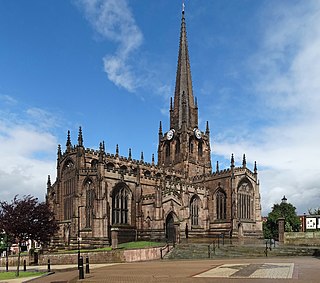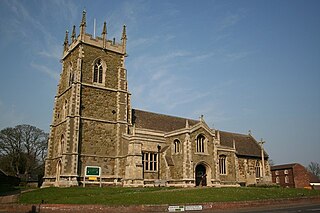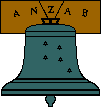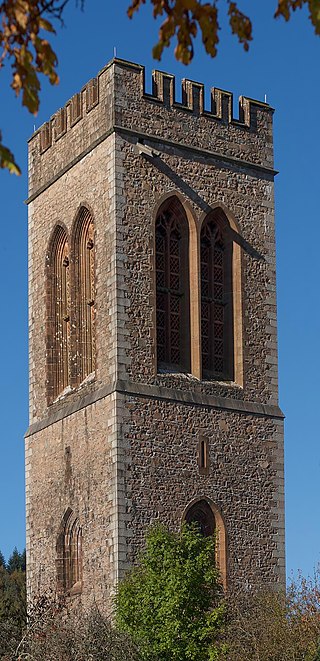
Change ringing is the art of ringing a set of tuned bells in a tightly controlled manner to produce precise variations in their successive striking sequences, known as "changes". This can be by method ringing in which the ringers commit to memory the rules for generating each change, or by call changes, where the ringers are instructed how to generate each change by instructions from a conductor. This creates a form of bell music which cannot be discerned as a conventional melody, but is a series of mathematical sequences.

Campanology is the scientific and musical study of bells. It encompasses the technology of bells – how they are founded, tuned and rung – as well as the history, methods, and traditions of bellringing as an art.
The Oxford University Society of Change Ringers, founded in 1872, is the official society dedicated to change ringing in Oxford University. Its objects are to promote the art of change ringing in the university and to ring for Sunday services in Oxford during full term.

Dove's Guide for Church Bell Ringers is the standard reference to the rings of bells hung for English-style full circle ringing. The vast majority of these "towers" are in England and Wales but the guide includes towers from the rest of the British Isles as well as a few from around the world. The latest edition is Dove's Guide for Church Bell Ringers to the Rings of Bells of the World.
The Ancient Society of College Youths (ASCY) is a change ringing society, founded in 1637 and based in the City of London. The society played a leading role in the early development of change ringing, and today, it provides ringers for important events at St Paul's Cathedral and Westminster Abbey. Although it is a non-territorial association, its importance is recognised through having four representatives on the Central Council of Church Bell Ringers.

St George's Cathedral is the principal Anglican church in the city of Perth, Western Australia, and the mother-church of the Anglican Diocese of Perth. It is located on St Georges Terrace in the centre of the city.
The Society of Cambridge Youths is a bellringing society founded and based in Cambridge. It is dedicated to ringing the bells of the university church, Great St Mary's, Cambridge for religious services at the church and also civil and Cambridge University events.

The Minster Church of All Saints or Rotherham Minster is the Anglican minster church of Rotherham, South Yorkshire, England. The Minster is a prominent example of Perpendicular Gothic architecture and various architectural historians have rated it highly. Nikolaus Pevsner describes it as "one of the largest and stateliest churches in Yorkshire", Simon Jenkins states it is "the best work in the county", and Alec Clifton-Taylor calls it the "glory of Rotherham". With its tall spire, it is Rotherham's most predominant landmark, and amongst the tallest churches in Yorkshire.
Bolognese bell ringing is a tradition of ringing bells that developed in Bologna, present day Italy. A form of full circle ringing, it entails swinging bells to develop rhythmic patterns.

St Wilfrid's, Alford is the Church of England parish church in Alford, Lincolnshire, England. It is a Grade I listed building.

Full circle ringing is a technique of ringing a tower bell such that it swings in a complete circle from mouth upwards to mouth upwards and then back again repetitively.
The Central Council of Church Bell Ringers (CCCBR) is an organisation founded in 1891 which represents ringers of church bells in the English style.

Veronese bell ringing is a style of ringing church bells that developed around Verona, Italy, from the eighteenth century. The bells are rung full circle, being held up by a rope and wheel until a note is required.

The Australian and New Zealand Association of Bellringers, known as ANZAB, is the organisation responsible for the promotion of English-style "full circle ringing" – namely change ringing and method ringing in bell towers with a peal of bells – across Australia and New Zealand.

St Patrick's Church is a Church of Ireland church, located on Castle Street, Ballymena, Northern Ireland. It is the main Parish Church in Ballymena's Anglican parish of Kirkinriola and Ballyclug, and is the main civic church of the town. The current church replaced an older church dating from the early 18th century on Church Street, and was opened in 1855. The new church was destroyed by fire in December 1879, and it was restored by the original builder, keeping to the same design. It reopened in 1881.

Evesham Bell Tower is the freestanding belfry for the town of Evesham, Worcestershire. Originally founded in 1207 by Adam Sortes, the present tower, the fourth to stand on the same site, was founded and built by Clement Lichfield, Abbot of Evesham as the bell tower for Evesham Abbey in the 16th century. It is the only part of the abbey complex to survive wholly intact.

The Suffolk Guild of Ringers for the Diocese of St Edmundsbury and Ipswich is a society and charity supporting the bell ringers and rings of bells in the Diocese of St Edmundsbury and Ipswich who practice the art of change ringing. The Guild was established on 2 April 1923 at Ipswich and covers over 200 rings of bells in the county of Suffolk in the area that falls within the diocese boundary.

The Duke's Tower, also known as Inveraray Bell Tower, is the detached bell tower of All Saints' Church, Inveraray, Argyll and Bute, Scotland. Standing 126 feet (38 m) high on the shores of Loch Fyne, it is a landmark for miles and amongst the most notable bell towers in the United Kingdom. The tower was built as a memorial to members of the Clan Campbell who died in the First World War. It is Category A listed by Historic Environment Scotland, the highest possible rating.
Campanology is the scientific and musical study of bells. It encompasses the technology of bells – how they are cast, tuned, and rung – as well as the history, methods, and traditions of bellringing as an art. Articles related to campanology include:













